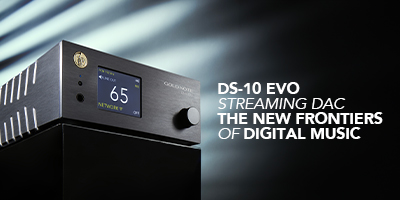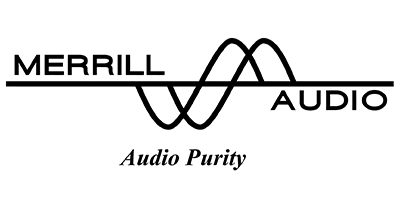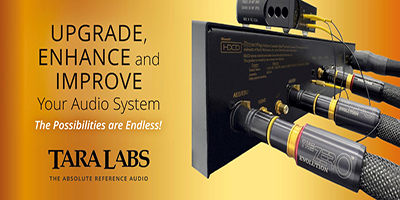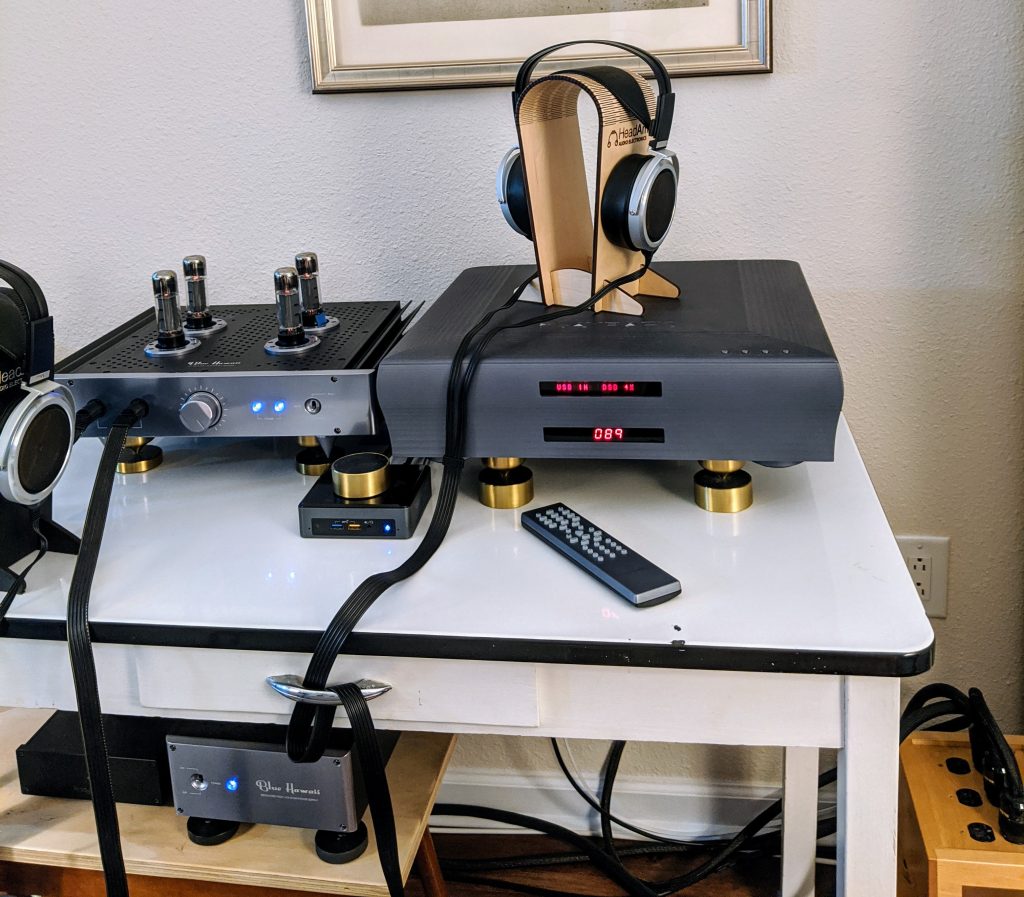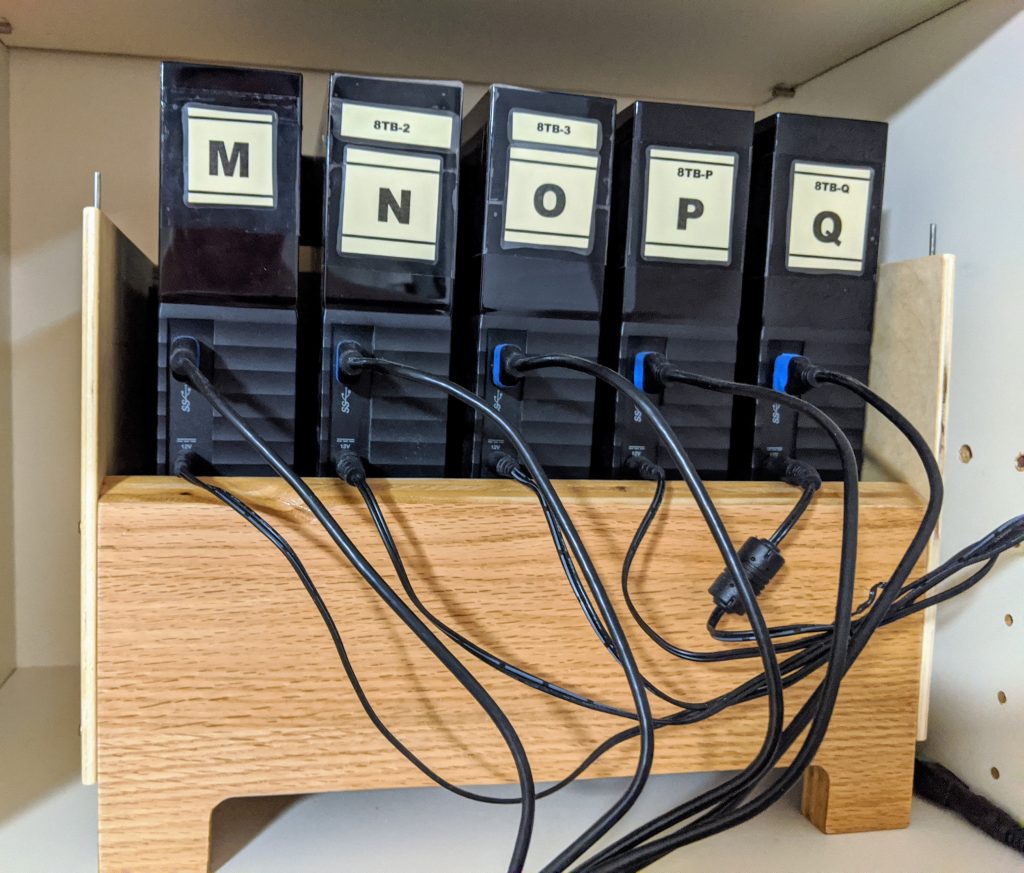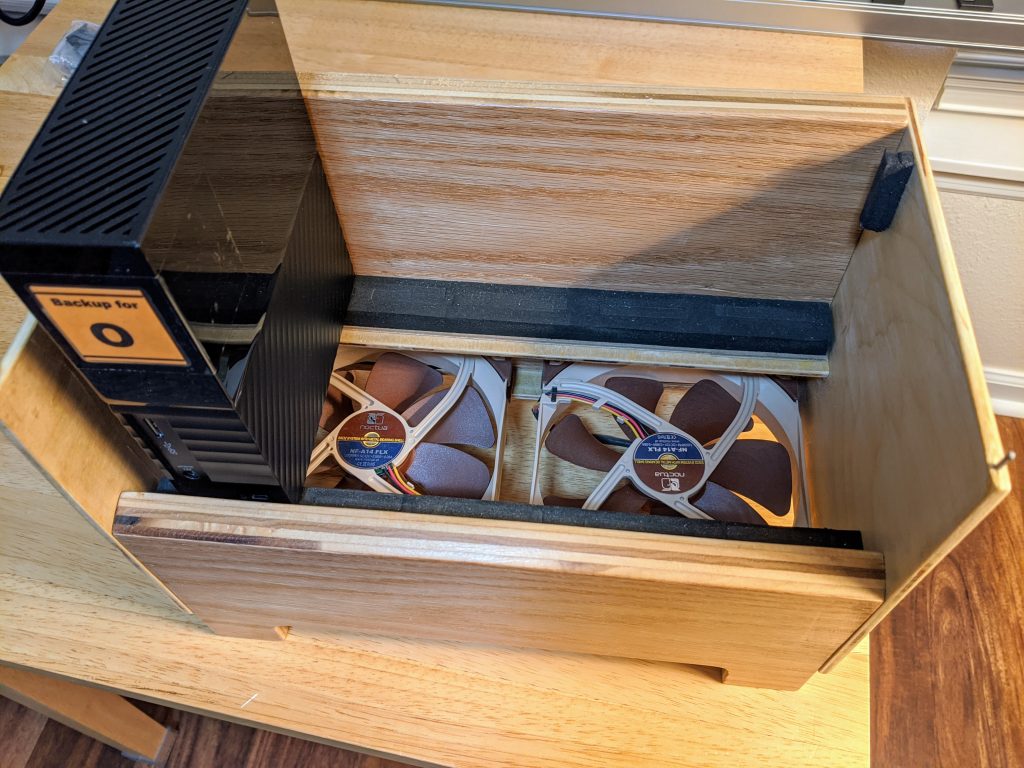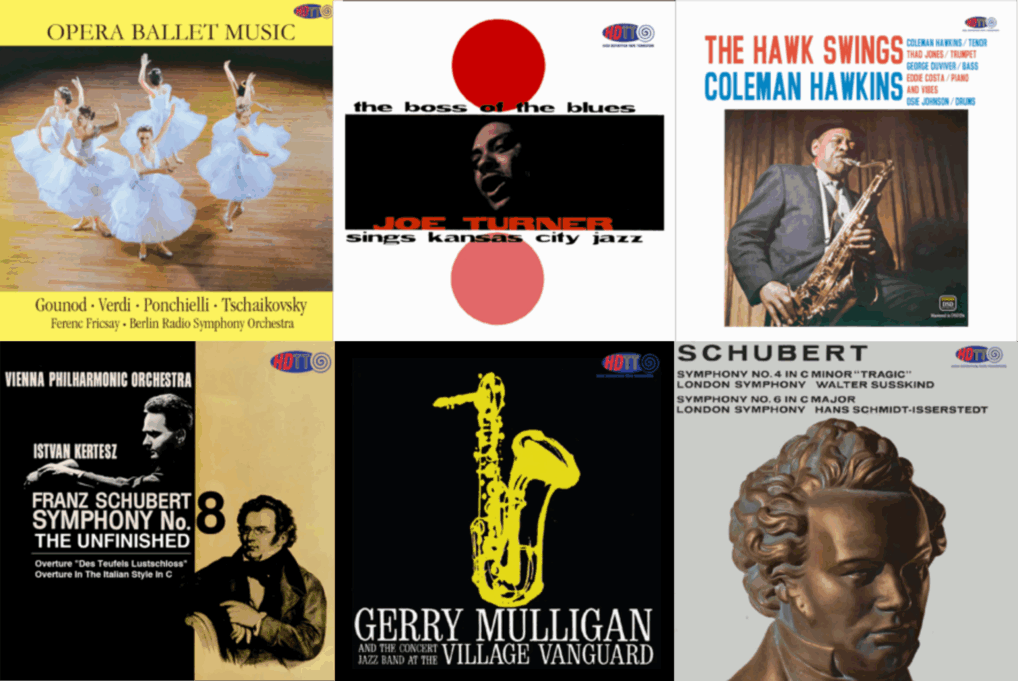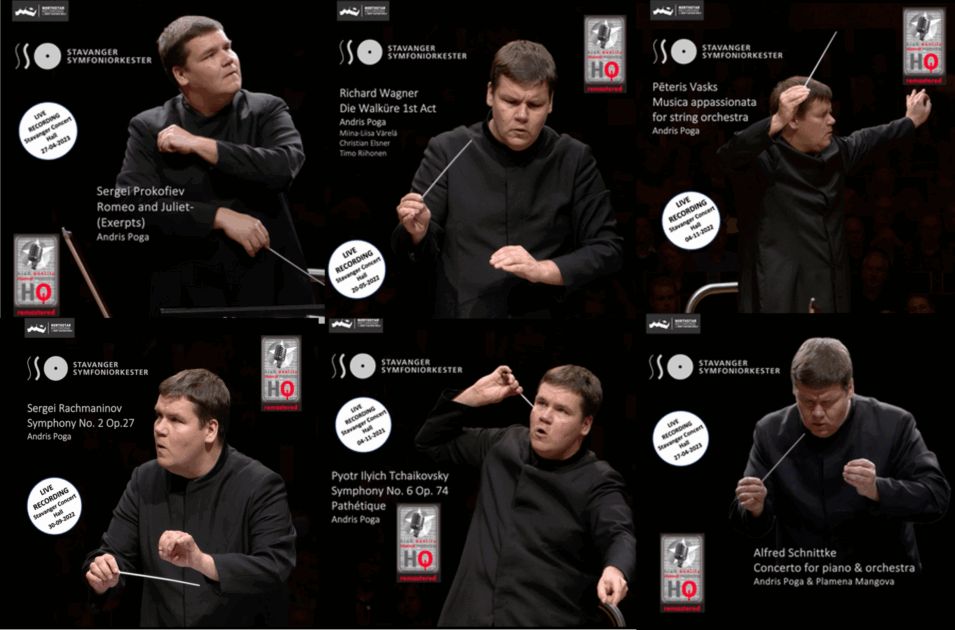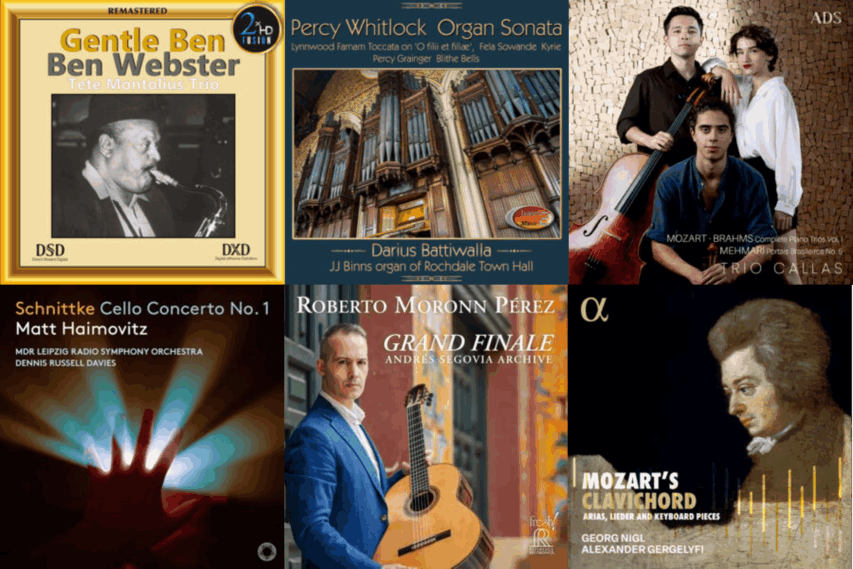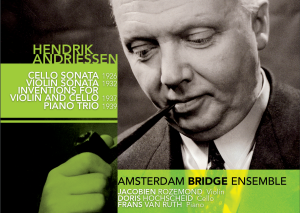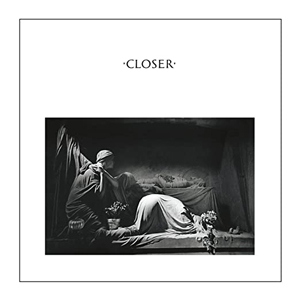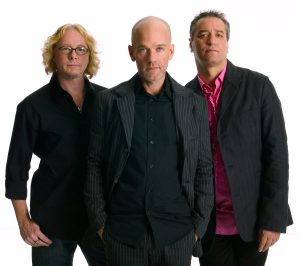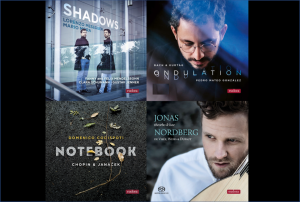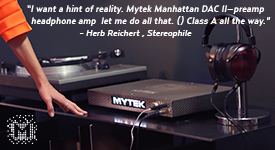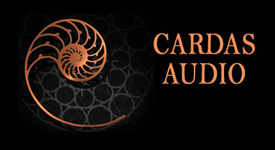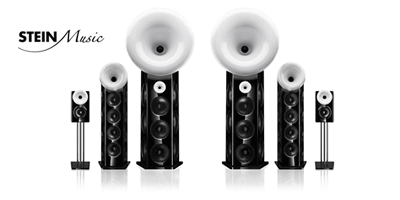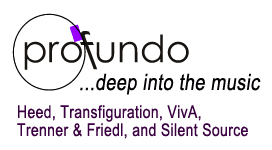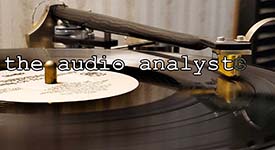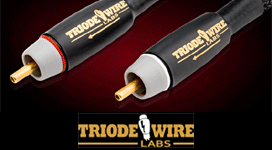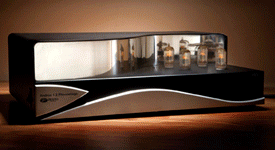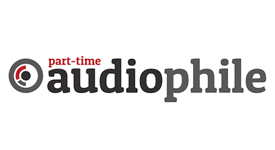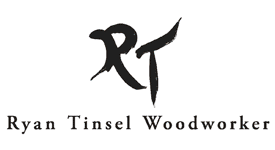If you've read any of my other articles, you will know that I consider modern Pure DSD256* recordings to be at the pinnacle of sound reproduction available today. And I've shared with you download samples so you can compare for yourself. Timbral accuracy, transparency, purity, and utter realism—these are characteristics I consistently hear with Pure DSD256 recordings.
But within Pure DSD256 is some flexibility reflecting the several ways recording and mastering engineers are working with DSD files to maintain them as "Pure DSD" while meeting the needs of the project and the desired outcomes. In an earlier article, I described these two categories: Pure DSD-Analog Mixed and Pure DSD-Direct Mixed. If you haven't read this earlier article, you may want to start with it:
Get the Master Tape Listening Experience with Pure DSD256, Free Sample Downloads Included.
A Free Sample Download Courtesy of Robert Hunka and Hunnia Records
In that earlier article, I promised to come up with a sample comparing the same Pure DSD256 tracking channels mixed both via an analog mixing board (Pure DSD256-Analog Mixed) and mixed entirely in the DSD domain without going into analog (Pure DSD256-Direct Mixed). And here they are... courtesy of Hunnia Records owner Robert Hunka and the excellent work by Hunnia recording engineer Sandor Arok and NativeDSD mastering engineer Tom Caulfield.
The sample files are from a DSD256 recording of music by Kodaly for violin and cello recorded in July 2025. You will find both an Analog Mixed and a Direct Mixed version of these DSD256 files. I hope you will comment below about what you hear between these two files. You'll find the download link a little further down in this article, but first I want to explain what they are.
These files are not the final master that will be released by Hunnia.
They have been created for comparison purposes using only the front two stereo microphones. The final edit master for release will use all six microphones, and will include further refinement to meet the artistic requirements of the performers for a finished release.
The recording was made in a church with good natural acoustics. The individual microphone channels were captured via a Merging Technologies A/D converter in DSD256.
For the Analog Mixed file, in the studio the DSD256 tracking channels were converted back to analog, fed to an analog mixing board for equalization, and the resulting equalized analog signal was again converted to DSD256 at the output of the analog board. The equipment used was a Studer 962 Analog Mixing Console and a Massenburg GML8200 Analog Equalizer. So, in this Analog Mixed sample file, the mixing has been done entirely in analog. At no point was the file converted to DXD or any other resolution of PCM. At all times, the signal was either in DSD or in analog. This is our Pure DSD256-Analog Mixed stereo file.
Sandor then send those same original DSD256 tracking channels to Tom Caulfield along with an explanation of the EQ parameters used in the Massenburg GML8200. See below:
EQ Settings from Massenburg GML8200 Analog Mixer. Click for larger view.
Tom Caulfield then produced the Pure DSD256-Direct Mixed stereo files. He wrote a translation (syntax expression) that converts the Massenburg analog mixer settings into something that HQPlayer Pro requires. The original DSD256 tracking channels were then processed through the HQPlayer Pro software using the provided syntax expression and delivering the final DSD256 file. There was no conversion involved. The file stayed entirely in the DSD domain. This is our Pure DSD256-Direct Mixed stereo file. The frequency response matches the Analog Mixed frequency response to within a measured 0.1dB. See below:
Frequency Plots from HQPlayer Pro Direct Mixed output. Click for larger view.
Now it's your turn to compare and determine what you think about the sound quality of Analog-Mixed versus Direct-Mixed. Let me know in the comments below. Here is the download link:
Free Sample Download Comparing Pure DSD256-Analog Mixed and Pure DSD256-Direct Mixed
What Ann and I Hear in These Comparison Samples
In this next section, I'll tell you what Ann and I hear in the Analog-Mixed versus Direct-Mixed sample comparisons. But, be warned: You may not want to read what we think until you've listened and decided for yourself without our opinion influencing you.
Our assessment: Without question, for both of us, we prefer the sound quality of the Pure DSD256-Direct Mixed file over the Analog Mixed file. Ann listened without knowing which file was which. After listening twice to each sample file, she had a clear preference for the Direct Mixed (the "B" version in our blind test). She thought the Analog Mixed had a bit of added presence to the sound and some edginess. It did not sound as natural and true to the instruments as the Direct Mixed, in her opinion, and she expressed a clear preference for the Direct Mixed.
My not-blind assessment was the same: a clear preference for the Direct Mixed. As I wrote to Tom Caulfield shortly after listening, "I am blown away by the superb clarity of the Direct Mixed. The Analog Mixed is very nice, but the Direct Mixed has a clarity with which the analog mix simply cannot compare."
Mastering engineers and label owners will have to decide about whether the additional clarity and transparency of Pure DSD256-Direct Mixed is worth the extra attention and time needed to produce this result. They are running a business after all. And they have to deal with expectations the performing artist may have about what their finished recording needs to sound like, expectations that may simply not be practical in a Pure DSD recording environment.
Still, I hope more and more will begin to identify value that the unique marketing proposition of Pure DSD256-Direct Mixed offers.
So, Let's Be Realistic About The Practicalities of Direct Mixed
And of Pure DSD in general. This is not an easy medium. It takes a commitment by the performing artist. It takes additional time, preparation, and effort from the recording and mastering engineers. For all concerned, there is financial risk because the old adage "time is money" persists through all of this.
Direct Mixed can work well for acoustic recordings within a good acoustic hall and with experienced placement of both the microphones and the performers. Excellent Pure DSD256-Direct Mixed recordings have already been released for solo instrument, small ensemble, and large orchestral recordings, including concertos. Gonzalo Noqué (Eudora Records), Jared Sacks, and Tom Caulfield have partnered to make these different kinds of recordings with phenomenal results.
But, one thing all of us involved would say to you: Direct Mixed is simply not practical for some recordings. There will be situations where it cannot easily be applied to achieve the results a producer or mastering engineer desires to accomplish. HQPlayer Pro has extensive capabilities, but it is not a Digital Audio Workstation. It does not have a GUI interface but instead requires syntax statements to be entered identifying the algorithmic process the software should apply. Perhaps other applications will emerge that begin to provide the capabilities of HQPlayer Pro but with the ease of use of a Digital Audio Workstation.
Analog Mixed allows for greater flexibility and greater ease in making the various sweetening of the recording that a producer or performing artist may require to achieve the artistic outcome they wish to hear in the final edit master. However, as I think you will hear in the sample files, there is a tradeoff in sound quality (assuming the same equalization and other sweetening has been applied in the Direct Mixed process, which is entirely possible to accomplish**). There is no free lunch.
And, let us be mindful that DSD256 in any form is still a fairly niche format. As more people hear it, as new DACs are purchased, I suspect demand will increase. But the growing dominance of streaming versus downloading will continue to mean that any format that must be downloaded (as DSD256 files must be) will continue to represent a minority of the market for music. So, where is the financial return for this investment?
I continue to remember the response Gonzalo Noqué gave me regarding taking the extra effort to release his Eudora Records recordings as Pure DSD256-Direct Mixed:
"Going this route is definitively not very practical and still pretty limiting compared to the DXD mixing path within Pyramix. But to my ears, (Pure DSD-Direct Mixed) delivers what in my opinion is the best digital sound achievable today when recording Classical music recorded in real acoustics. So, in my mind, I can only think: 'Why wouldn't I do it?' Whether the difference is large or small, noticeable by many or few, doesn't really matter."
For some additional samples of Pure DSD256-Direct Mixed recordings (and comparing to the same track when mixed in DXD, the industry default) you will find a download link in the following article:
Get the Master Tape Listening Experience with Pure DSD256, Free Sample Downloads Included.
Additional articles about Pure DSD recording, mastering and recommended albums
Pure DSD256, My Top of the Pile
(for a list of recommended albums, both Direct Mixed and Analog Mixed)
Mixing in Pure DSD—No PCM Allowed
Choosing the Best Sounding File Format with Free Sample Downloads
* A "Pure DSD" file is a DSD file that has been created from an analog input signal and has not experienced any processing in PCM. No trip out for a DXD project session in your digital audio workstation of choice to mix and sweeten it. No conversion from a PCM original recording. If the file has been converted to DSD from DXD or some other resolution of PCM (44.1kHz, 96kHz, 192kHz, etc.), it is not a Pure DSD file. Ann summarizes best: The Pure DSD files are cleaner, they have more detail, they're more open, and they have a greater sense of air.
** With one exception. I am told that HQPlayer Pro, with appropriate algorithms entered, can accomplish almost every effect except for compression. Compression is a reduction process and Tom says he knows of no way to accomplish it in HQPP. Gonzalo Noqué gets around this by considering full dynamic range with no compression to be a positive attribute of his recordings.

